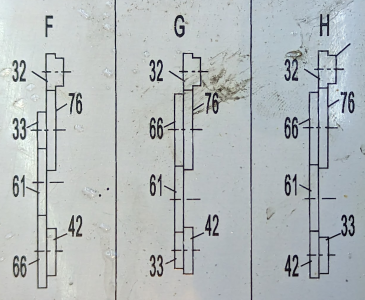My first gear cutter set is on its way to me. I need an 11-tooth gear. I had a memory that 11 teeth was the fewest teeth you wanted on a standard 20° PA gear.
Now I see that the thinnest gear cutter (#1 or #8 depending on the convention used by the manufacturer) is specified for 12 teeth.
Oops.
My plan is to mesh with a 66-tooth gear for a 6:1 mechanical advantage. Can I reasonably quantify the impact of cutting an 11-tooth gear with the 12-tooth cutter?
Now I see that the thinnest gear cutter (#1 or #8 depending on the convention used by the manufacturer) is specified for 12 teeth.
Oops.
My plan is to mesh with a 66-tooth gear for a 6:1 mechanical advantage. Can I reasonably quantify the impact of cutting an 11-tooth gear with the 12-tooth cutter?



